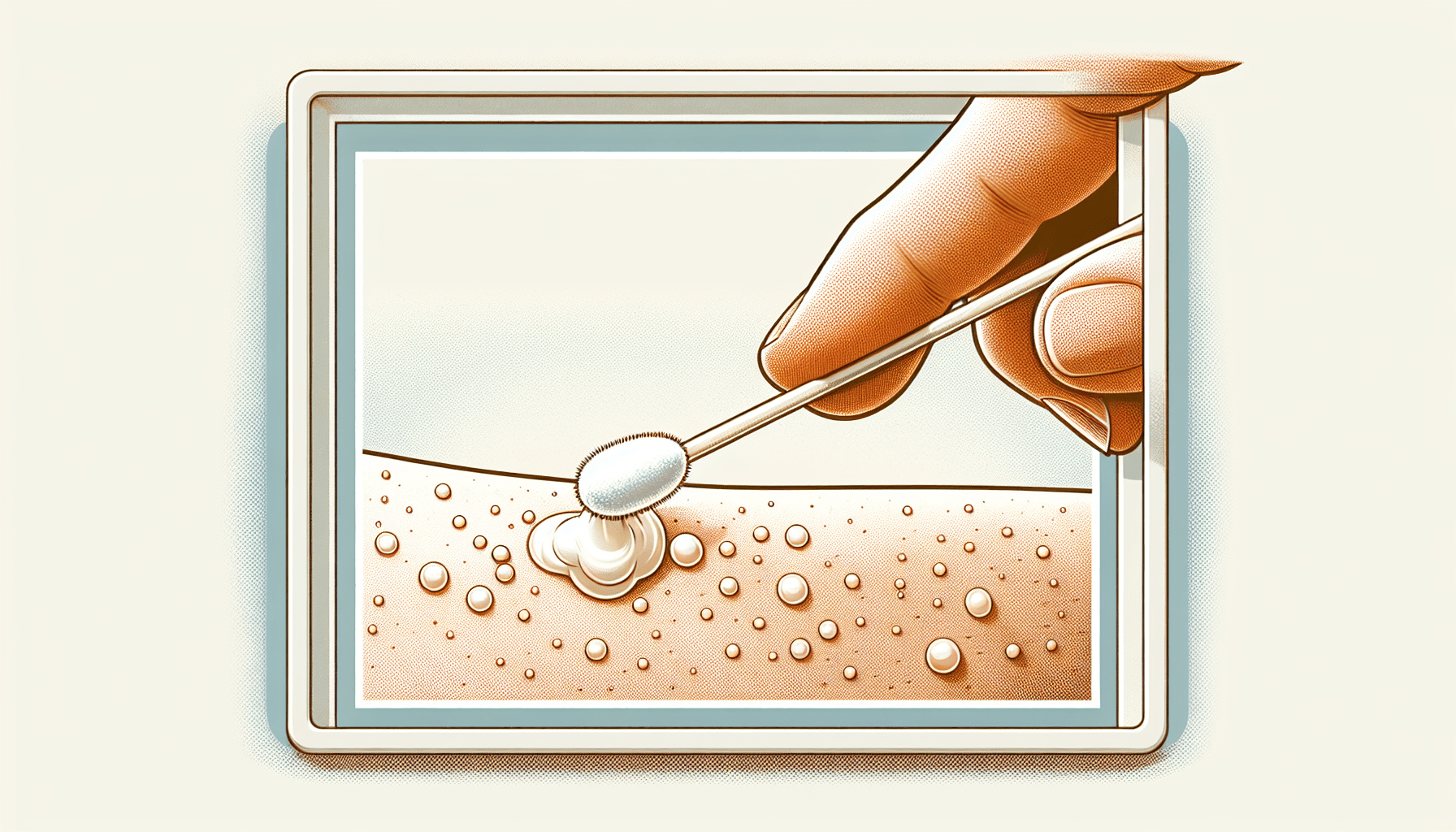So, you’ve just popped a zit and now you’re wondering how to clean it up? Don’t worry, we’ve got you covered! Dealing with a popped zit can be a bit tricky, but with the right approach, you can keep your skin clean and promote healing. In this article, we’ll walk you through some simple steps to ensure that your skin stays fresh and healthy after popping a zit. Say goodbye to redness and hello to smooth, clear skin!
Importance of Cleaning a Popped Zit
Popping a zit may provide temporary relief, but it is essential to clean the area afterward to prevent infection, promote healing, and reduce the risk of scarring. Proper cleaning helps eliminate bacteria and impurities that may have been introduced during the popping process. By following a few simple steps, you can ensure the best possible outcome for your skin.
Preparation Before Cleaning
Before you begin cleaning the popped zit, it’s crucial to prepare properly. Start by washing your hands thoroughly with soap and warm water. This step is vital to prevent introducing even more bacteria onto your skin. Once your hands are clean, gather the necessary supplies, such as a mild cleanser, an antiseptic or antibacterial solution, recommended topical ointments or creams, and a clean towel. Finally, prepare a clean workspace with a fresh towel or tissue to lay out your supplies.
Cleaning the Popped Zit
To clean the popped zit, start by gently cleansing the area with a mild cleanser. Be careful not to apply too much pressure or scrub aggressively, as this can further irritate the skin and slow down the healing process. Use your fingertips or a soft cloth to cleanse the area gently. After cleansing, pat the area dry with a clean towel or allow it to air dry. Remember to be gentle throughout this process to avoid causing any further damage to your skin.
Applying Antiseptic or Antibacterial Solution
After cleaning the popped zit, it’s essential to apply an antiseptic or antibacterial solution to prevent infection. Choose a suitable solution recommended by a dermatologist or pharmacist. With a clean cotton swab or pad, dab the solution gently on the popped zit. Be cautious not to overdo it, as excessive application may dry out the surrounding skin and potentially cause irritation. Allow the solution to air dry on the skin.
Using Topical Ointments or Creams
In addition to the antiseptic solution, you may consider using topical ointments or creams to promote healing and prevent further breakouts. Benzoyl peroxide, for example, is a common ingredient known for its acne-fighting properties. When using benzoyl peroxide or any other recommended product, apply a thin layer to the affected area following the instructions provided. Be careful not to use excessive amounts, as this may result in dryness or irritation. Allow the product to absorb into the skin before proceeding to the next step.
Applying a Spot Treatment
Depending on the severity of the popped zit, using a spot treatment can help speed up the healing process. Look for spot treatments specifically designed to target acne or blemishes. Using a clean cotton swab, apply the spot treatment directly to the popped zit without touching the surrounding skin. Allow the spot treatment to absorb fully for the best results. Remember that spot treatments should only be used as directed and should not be applied excessively.
Covering the Popped Zit
To protect the popped zit and promote healthy healing, consider covering it with a clean bandage or adhesive strip. These coverings can help prevent dirt and bacteria from entering the open wound. However, it is crucial to ensure proper ventilation by using a breathable bandage. Avoid using makeup or heavy creams on the area, as these can clog pores and hinder the healing process.
Guidelines for Aftercare
After cleaning a popped zit, it’s important to follow proper aftercare guidelines to optimize healing and minimize the risk of complications. Firstly, avoid the temptation to pick or squeeze the area further. This can introduce more bacteria and potentially lead to scarring. Keep the area clean and dry by continuing to wash your face twice a day with a gentle cleanser and avoiding heavy creams or makeup on the affected area. Avoid applying excessive pressure to the zit, as this can slow down the healing process. Lastly, resist the urge to forcefully remove scabs that may form, as this can also result in scarring.
Seeking Medical Help
While most popped zits can be effectively treated at home, there are certain situations where medical intervention may be necessary. If the area becomes highly swollen or painful, it’s best to consult a healthcare professional. Additionally, if there are signs of infection, such as increased redness, warmth, pus, or fever, seeking medical help is crucial. Finally, if you have persistent or severe acne that is not responding to home treatments, it’s recommended to schedule an appointment with a dermatologist who can provide further guidance and specialized care.
Conclusion
Properly cleaning a popped zit is of utmost importance to prevent infection, promote healing, and reduce scarring. By following the steps outlined above, you can take proper care of your skin after popping a zit. Remember to wash your hands, gather necessary supplies, and create a clean workspace before beginning the cleaning process. Cleanse the area gently, apply an antiseptic or antibacterial solution, consider using topical ointments or creams, and apply a suitable spot treatment if needed. Covering the popped zit with a breathable bandage and following proper aftercare guidelines are crucial for optimal healing. If necessary, seek medical help for severe or persistent acne. Taking these steps will help ensure the best possible outcome for your skin and maintain its overall health.
